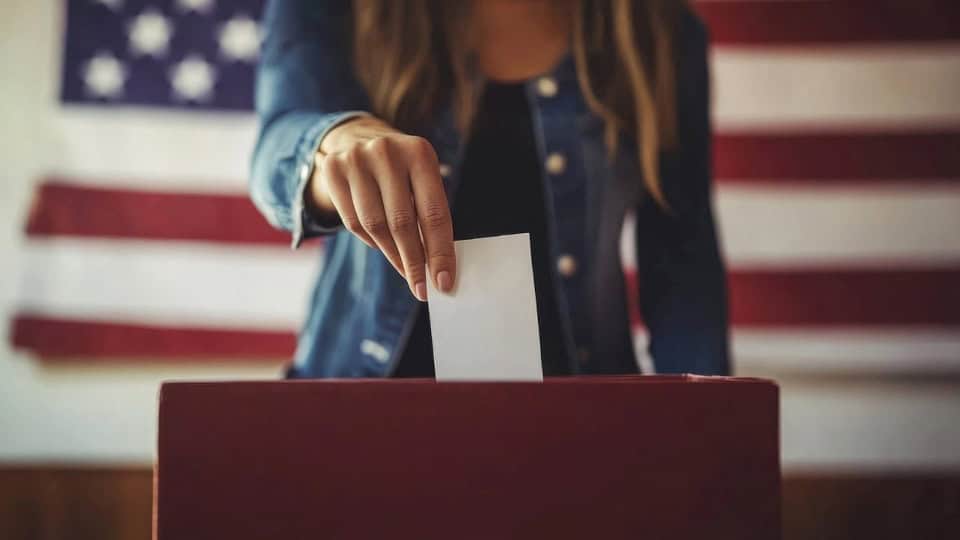Why Voter Turnout is Falling in Western Democracies
Voter participation in established Western democracies has declined significantly over the past several decades, raising concerns about democratic legitimacy and representation. While specific rates vary by country and election type, the overall trend shows fewer citizens engaging in the fundamental democratic act of voting.
This decline isn't simply about civic laziness or political apathy. Multiple complex factors contribute to reduced voter participation, from institutional barriers and campaign dissatisfaction to broader social changes that affect how citizens relate to political systems and democratic processes.
The Numbers Tell the Story
US presidential election turnout peaked at 63% in 1960 and has generally declined since. European parliamentary elections show similar patterns, with some countries experiencing 10-15 percentage point drops in participation over 40 years.

Institutional and Structural Barriers
Voting procedures that were designed for different eras create unnecessary friction for modern citizens. Weekday elections, limited polling hours, voter registration requirements, and identification laws can discourage participation, particularly among working-class citizens who cannot easily take time off work or navigate bureaucratic processes.
Electoral systems that make individual votes feel meaningless also depress turnout. Safe districts, electoral college systems, and winner-take-all arrangements can make voters feel their participation won't affect outcomes, leading to rational abstention from what seems like a futile exercise.
Procedural Barriers
Registration requirements, limited voting hours, weekday elections, voter ID laws.
System Design
Non-competitive districts, electoral systems that minimize individual vote impact.
Political Dissatisfaction and Trust Deficit
Growing dissatisfaction with political choices drives some citizens away from voting altogether. When voters perceive candidates as equally unsatisfactory or untrustworthy, abstention becomes a form of protest rather than apathy. This sentiment has intensified as political scandals and perceived corruption erode confidence in democratic institutions.
The professionalization of politics has created a political class that many citizens view as disconnected from their concerns. Campaign promises that go unfulfilled, policy positions that shift with polling data, and politician behavior that seems more focused on career advancement than public service all contribute to voter disillusionment.
Media Environment and Information Overload
The modern media landscape can overwhelm citizens with conflicting information while simultaneously failing to provide clear guidance on policy differences between candidates. Negative campaigning, horse-race coverage, and sensationalized political reporting can make politics seem distasteful rather than inspiring.
Social media algorithms can create echo chambers that either reinforce existing beliefs without encouraging political action or expose users to such extreme political content that mainstream voting seems inadequate to address perceived problems.
Generational Differences
Younger generations show different patterns of civic engagement, often preferring issue-based activism over electoral participation. They may view voting as less effective than direct action or online organizing for creating change.
Economic Factors and Class Divisions
Economic inequality affects voting participation in multiple ways. Lower-income citizens may lack the time flexibility to vote, face transportation barriers, or feel that political systems primarily serve wealthy interests regardless of election outcomes. The opportunity costs of political participation can be higher for those struggling economically.
Class-based differences in civic education and political socialization also affect turnout patterns. Citizens from higher socioeconomic backgrounds typically receive more political information through their social networks and have greater confidence in their ability to navigate political systems.
Changing Social Connections
Declining social capital and community connections reduce the social pressure and encouragement that traditionally drove voting participation. When fewer people belong to civic organizations, religious congregations, or tight-knit neighborhoods, they miss social networks that reinforce democratic participation as a civic duty.
Geographic mobility means many citizens live in communities where they have shallow roots and limited investment in local political outcomes. This residential instability can reduce both knowledge of local issues and motivation to participate in elections.
Individual Factors
Political cynicism, information overload, economic stress, time constraints.
Systemic Issues
Voting barriers, non-competitive elections, institutional failures, media problems.
Social Changes
Declining social capital, residential mobility, weakened civic institutions.
Alternative Forms of Political Engagement
Some of the apparent decline in political participation may reflect shifts toward different forms of civic engagement rather than complete disengagement. Citizens may participate in protests, sign petitions, engage in online activism, or support issue-based organizations while skipping electoral participation.
These alternative forms of participation can be more immediate and specific than voting, allowing people to address particular issues they care about without endorsing entire political packages represented by candidates or parties.
Consequences for Democratic Legitimacy
Low turnout raises questions about whether elected officials truly represent popular will when they're chosen by small minorities of eligible voters. This can create legitimacy challenges for democratic governance and policy implementation, particularly for controversial or difficult decisions.
Unequal participation across demographic groups means that electoral outcomes may systematically underrepresent certain populations, potentially skewing policy priorities away from the needs of non-voting populations.
Potential Solutions and Reforms
Various reforms could address barriers to participation, including automatic voter registration, expanded mail-in voting, extended voting periods, and making elections holidays. Some countries have experimented with compulsory voting, though this raises questions about the value of coerced participation.
Addressing deeper causes requires tackling political polarization, improving civic education, and creating electoral systems that make individual votes feel more meaningful. Campaign finance reform and anti-corruption measures might help restore trust in democratic institutions.
The decline in voter turnout reflects broader challenges facing democratic societies as they adapt to social, economic, and technological changes. Populist movements often claim to represent citizens who feel excluded from traditional political processes, though their solutions may threaten democratic norms in different ways.
Revitalizing democratic participation requires addressing both immediate barriers to voting and longer-term questions about how democratic institutions can remain relevant and responsive to citizen needs. Research on voting barriers provides evidence for specific reforms that could improve participation rates.
The health of democratic societies depends on meaningful citizen participation in electoral processes. Understanding why turnout is declining is essential for developing solutions that can restore democratic vitality and legitimacy in Western democracies.
